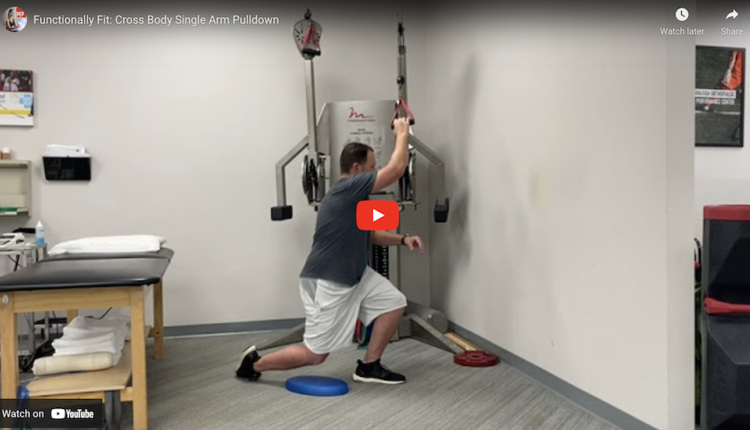This exercise is done using a BOSU® Ballast Ball and BOSU® Balance Pods. It is considered an advanced exercise. Any clients with pre-existing upper body restrictions, injuries or limitations in strength should be screened accordingly. For those seeking a challenging way to enhance core, hip and shoulder stability this exercise is a great option.

Progressions:
Application: This exercise is intended for advanced users who want or need to increase shoulder, core and hip stability. The core must function in an anti-extension and anti-rotation fashion throughout which is a safe and effective way to target those muscles while also providing a demanding strengthening exercise for the upper body and hips. The movement progressions further add to instability, and the BOSU® Balance Pods and BOSU® Ballast Ball used together provide a unique challenge for this exercise.

Execution: Begin by placing both hands on top of two BOSU® Balance Pods (dome side up) with the hands positioned beneath the shoulders. Next, slowly reach the feet back and onto the BOSU® Ballast Ball, initially positioning the BOSU® Ballast Ball beneath the lower shins/ankle. The elbows should be stable and close to full extension but can be slightly bent to stabilize the upper body. Hold this neutral spine position for 30 seconds making sure to avoid lumbar hyperextension. Repeat for 2-3 sets, increasing time as able.
Quality of the movement and proper alignment and stability should be a primary focus. The speed of movement should be slower and deliberate.
1. Place the toes on the ball with the ankles in neutral (increases the lever arm and instability)
2. Perform slow, controlled knee tucks
3. Perform side-to-side movement with the lower body
4. Perform controlled circles with the lower body
The advanced progressions can be done for time or repetitions.
Regression:
1. Move the BOSU® Ballast Ball higher up (mid-shin) to reduce the lever arm
Precautions: Sufficient upper body strength is a must for this exercise. Clients with wrist pain/weakness or elbow and shoulder pathology should only perform this exercise provided they are symptom-free and can perform traditional tall plank variations on the ground with proper form.















